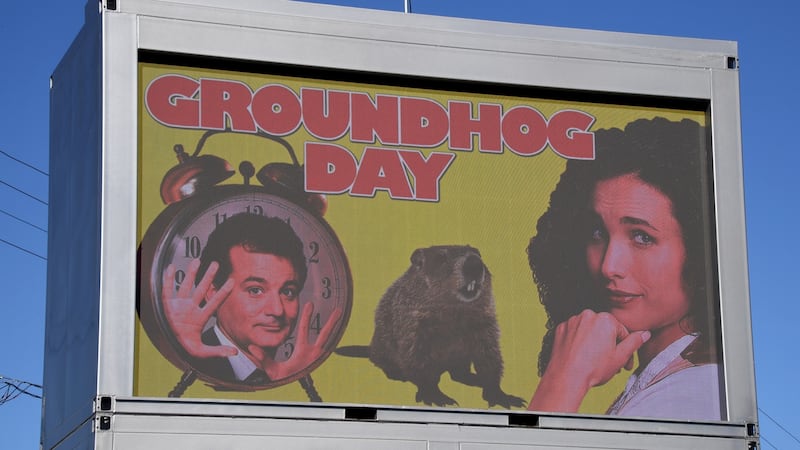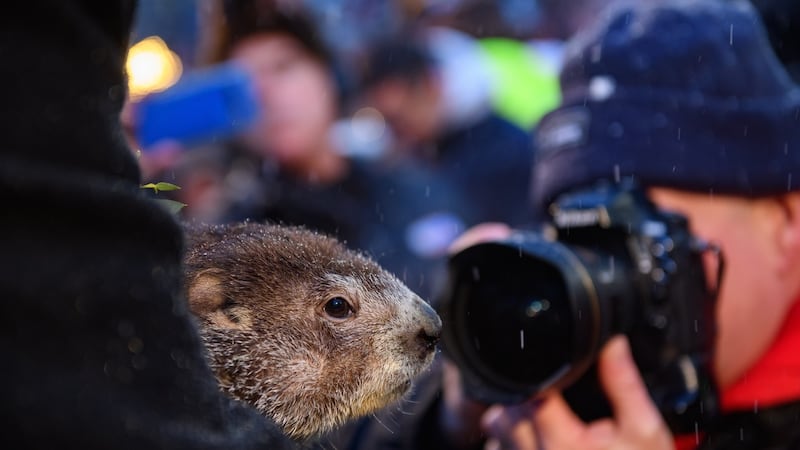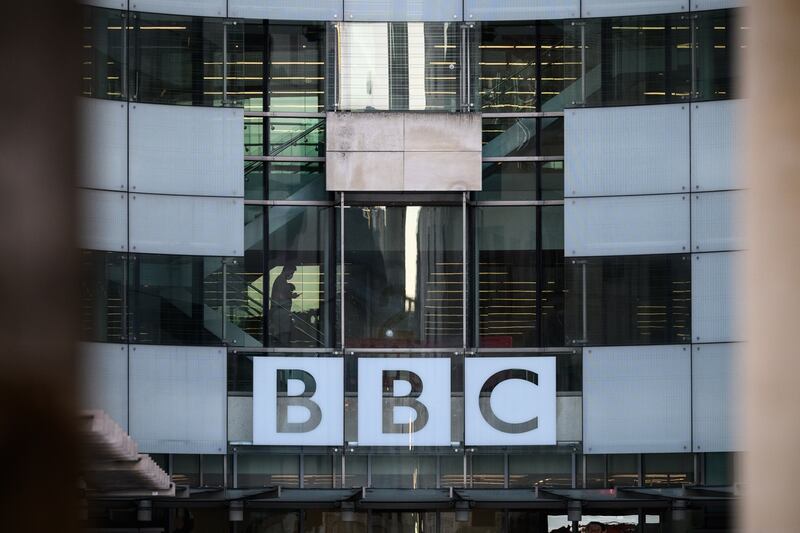Groundhog Day is the best film ever made about working in the media, and the most unerringly accurate. I’ve said this before, and the chances are I will say it again.
Never mind all the prestige dramas crammed with noble speeches about the fourth estate, the thrillers starring scruffy hacks investigating unsolved crimes and those unfeasibly stylish fantasies where magazine writers own loft apartments in New York.
None of them hold a candle to even the opening scene of Groundhog Day, when Channel 9 Pittsburgh weatherman Phil Connors (Bill Murray) informs viewers he's off to Punxsutawney to cover the groundhog festival and smiling anchor Nan helpfully chimes in with: "This is your third year in a row, isn't it Phil?"
It’s his fourth, he seethes back. His fourth, Nan.
The date, February 2nd, marks an obscure Pennsylvanian tradition of determining when spring will begin by consulting a rodent. If the groundhog sees his shadow, there will be six more weeks of winter. But as a metaphor for tediously repetitive events, Groundhog Day is now so embedded in the cultural lexicon that it is freely invoked by people who haven’t seen the 1993 time-loop comedy that gave us this meaning.
That, of course, will be despite the best efforts of Sky Cinema's comedy channel, which this Wednesday will show nothing but Groundhog Day on repeat – an old scheduling joke that only improves with age.

Written by Danny Rubin and director Harold Ramis, the film is so enduringly popular that a whole industry has grown up around Groundhog Day as a hook for discussing both the psychological drain of days that are relentlessly samey (a lockdown special) and the particular gloom of middle-aged career ennui.
"Do you feel like you're reliving the same day over and over?" asks the blurb for inspirational speaker Mike Stevenson's talk this week for the Institute of Advertising Practitioners in Ireland, titled How to Stay Motivated When Faced with Groundhog Day Syndrome. Tips will be offered.
Painful stasis
The “syndrome” can naturally affect anyone who is in continuous employment, but suffering because their value to their employer lies in doing the same thing over and over again, and not in having autonomy, a sense of purpose or the opportunity to develop new skills.
True appreciation of this painful stasis arrives with age. I once had a journalism lecturer who recalled encountering an editor colleague with his head in his hands because Valentine’s Day was approaching for the umpteenth time and he was bored beyond reason by every potential story angle.
Believing this to be a fun job, I couldn’t comprehend the unnamed editor’s exhaustion or why a group of mostly teenage students were being warned about his plight. Now I think about this story all the time.
Even journalists who dash from earthquakes to wars, ostensibly thriving on more variety in their working life than most people, can fall victim to Groundhog Day Syndrome, almost as if their proximity to drama heightens their awareness of the limitations of their role in reporting it. That a dull life can be a lucky one is hard to remember amid the grinding monotony of the next deadline, the next live segment, the next email.
Political journalists covering Trump and now Johnson – waiting for Sue Gray etc – have certainly seemed familiar with that round-in-circles feeling as they report on scandal after scandal, with little changing in the coffee-fuelled interim. The despair of Groundhog Day is not about the same things happening over and over, it's about the same things happening over and over without consequence.

Not everybody is a fan of the constant mentions. The argument goes that because curmudgeonly Phil escapes his confinement to February 2nd only by becoming a better person, the film is really about the importance of learning to evolve. This part gets forgotten because journalists are themselves stuck in their ways and too reluctant to change. They're as wrong about Groundhog Day as Phil is about the path of the blizzard ripping through Pennsylvania.
It’s a fair enough take. The day journalists give up on telling new stories in new ways is the day journalism dies. References to Groundhog Day have become a bit like, well, Groundhog Day.
But what has equally been lost is this: Phil Connors is right. The groundhog festival is a daft assignment. It is a cutesy celebration of superstition that understandably seems humiliating to the sort of a broadcasting veteran who covets credibility and despises inane DJ banter.
Occupational hazard
Obnoxious, cynical Phil is deeply jaded, but his jadedness is not entirely his own fault. He wants to do things differently, but no one supports him. Repetition is seen as an unavoidable occupational hazard rather than a reasonable source of frustration.
Cameraman Larry (Chris Elliott), who has “covered the swallows returning to Capistrano six years in a row”, regards Phil as a “prima donna”. Producer Rita (Andie MacDowell) is blandly upbeat about the trip, despite later claiming it to be obvious that she wants “more” than Channel 9 Pittsburgh.
Interestingly, an earlier draft of the script shows Rita overtly agreeing with Phil about the merits of the groundhog story, pleading to a Channel 9 boss that she wants to “follow up on the nurse’s strike” instead and dejectedly noting that what she has is a job, not a career. This same draft also has Phil declaring “Oh, no, not again” to his boss’s orders, swiftly followed by “Forget it, I’m not going” – sentiments to which every journalist can surely relate.
Thanks to the near-perfect Groundhog Day, anybody who feels their life has stalled has a handy term to describe that predicament.
The dark irony of the film’s success is that the rise in prominence it has given to the festival itself actually obliges more journalists to pay attention to the movements of a large squirrel and draw meteorological conclusions.















